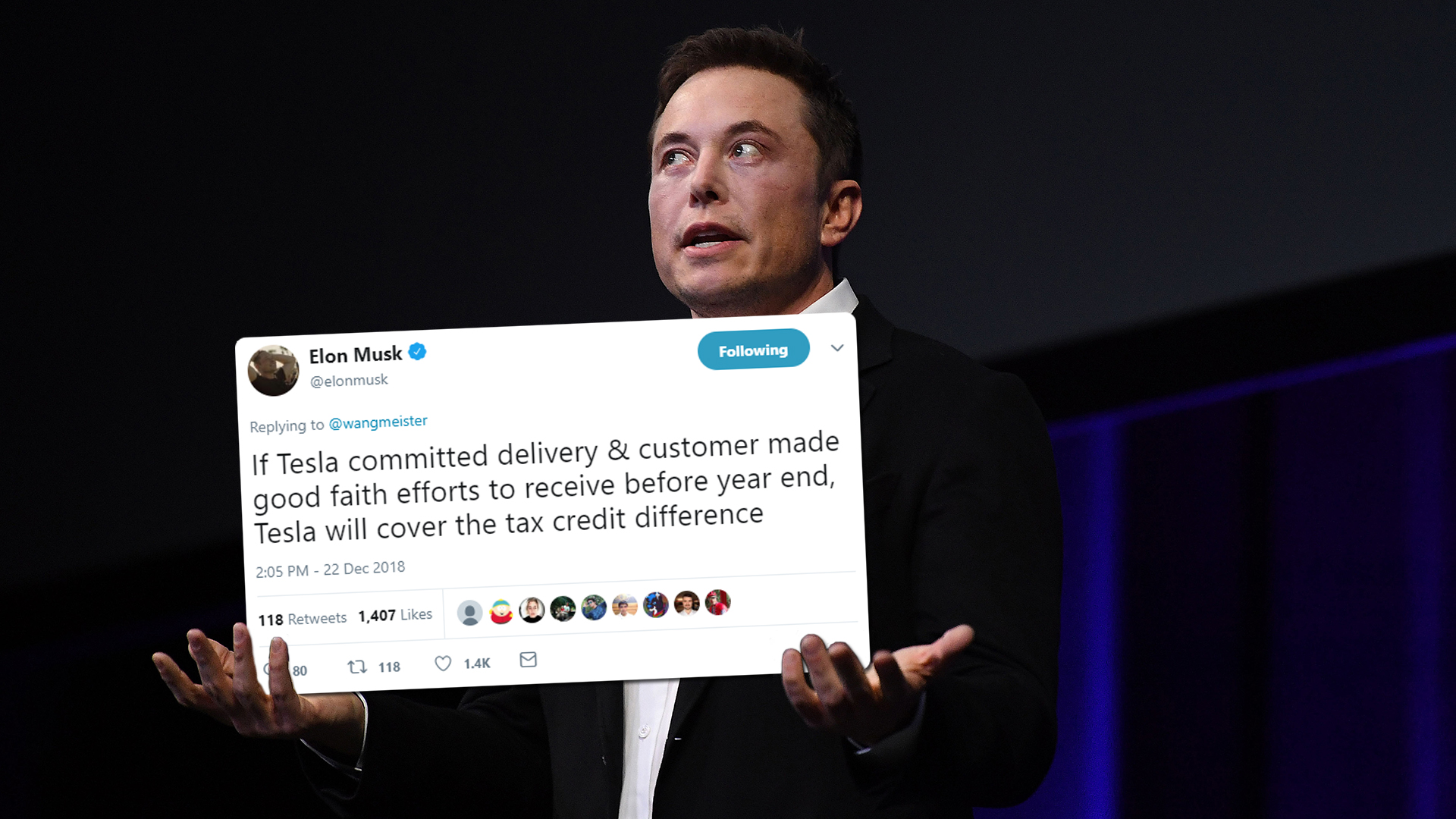

Future Tesla owners in the United States have just four days to take delivery of a new car before the $7,500 electric car tax credit is cut in half. CEO Elon Musk told prospective buyers via Twiter that the automaker would “cover the tax credit difference” if their vehicles were not able to be delivered by the end of the year and within the tax credit deadline, so as long as certain conditions were met.
In order for the automaker to cover the difference, Musk says that Tesla must have committed delivery of the vehicle no later than December 31st and the customer must make a “good faith” attempt to receive the car. It’s not clear exactly how Tesla would fulfill this payment to customers; whether it would be deducted from the purchase price of the vehicle, a rebate check for the amount, or in some other manner.
Earlier this year, Tesla said that it would only guarantee end-of-year delivery to those who purchased a vehicle before October 15th.
Over the holiday weekend, Musk announced that Tesla had released all cars that had been originally ordered but buyers didn’t finalize the sales process, back onto the market. Additionally, the CEO stated that any test drive and display cars would be released for sale at a discount.
Tesla became the first automaker in the United States to pass the Federal threshold of 200,000 domestic electric vehicle deliveries. As a result, consumers may no longer claim the full $7,500 tax credit if they take delivery of their vehicle after the end of the year. The tax credit will be halved to $3,750 for all cars delivered during the first half of 2019, and then again to $1,875 for all vehicles during the second half. By 2020, the credit will be completely diminished unless legislation changes.
Musk’s tweets point at Tesla pushing hard for year-end sales before the U.S. tax credit expires on January 1, 2019. The automaker often shows the customers the purchase price of the vehicle with the tax credit deducted, highlighting the discounted price after the tax credit. For some buyers, this would not necessarily sway a make-or-break decision for purchasing the car, however, a $7,500 difference could translate into a monthly payment discrepancy of nearly $135. With the tax credit being eliminated, this number will rise substantially and not be so attractive from the start.

The automaker would also benefit from a bump in earnings towards the end of its fiscal year. During the company’s Q2 2018 earnings call, Musk stated that Tesla’s goal was to be “profitable and cash flow positive for every quarter going forward“. Tesla achieved that goal for Q3 2018, though more than 60 percent of its profit was due to the sale of regulatory credits and not directly related to income from customer-facing sales revenue. In order to sustain profitability for multiple quarters, Tesla must also budget a $920 million debt that is due to be paid back in March 2019.
Fortunately, Tesla is also preparing to begin European deliveries of the Model 3 during Q1 2019, which means that it expects to curb the potential unknown of U.S. demand by fulfilling its backlog of vehicle orders overseas.